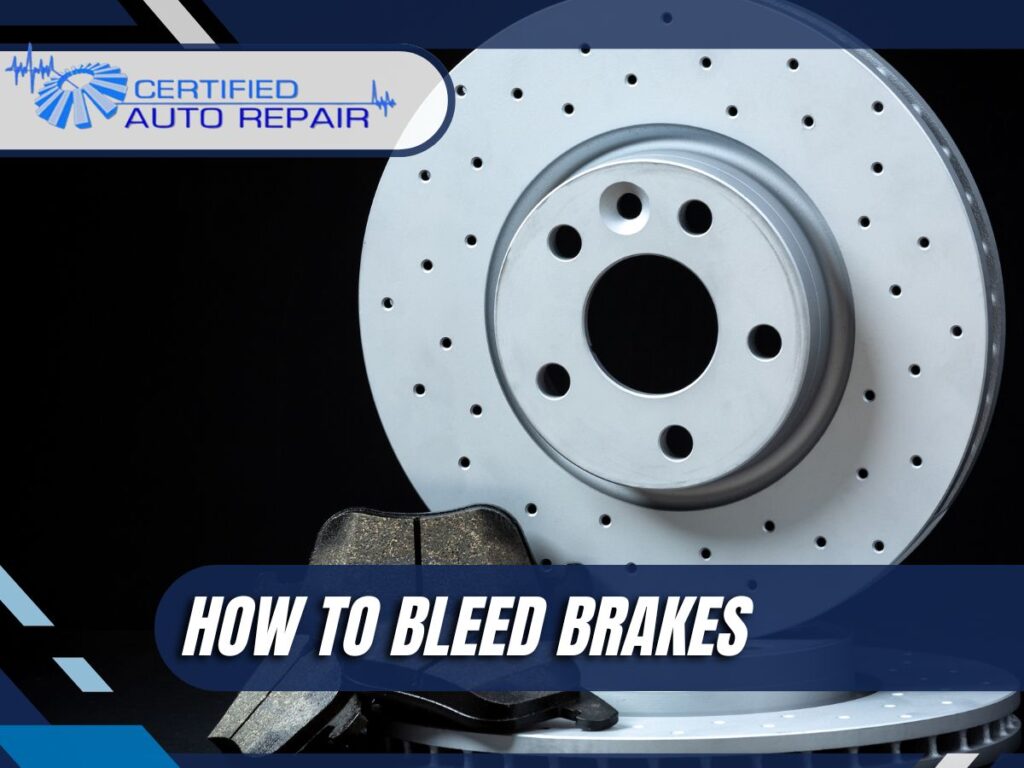When it comes to vehicle safety, few components are as vital as your braking system. One crucial aspect of brake maintenance is bleeding the brakes, a process that removes air bubbles from the brake lines, ensuring optimal braking performance. Whether you’re a DIY enthusiast or just looking to understand this process better, knowing how to bleed brakes can help you maintain a safe and efficient vehicle.
In this guide, we’ll walk you through the reasons why bleeding brakes is important, when you should do it, and how to do it properly. By the end of this article, you’ll have the knowledge to address brake issues before they become dangerous.

What is Brake Bleeding and Why is it Important?
Bleeding brakes is a process used to remove air from the brake lines, which can negatively affect the performance of the braking system. When air enters the brake lines, it can create a soft or “spongy” brake pedal feel, reducing your ability to stop quickly or safely. In a worst-case scenario, air bubbles in the brake lines can cause complete brake failure.
Brake fluid works by transmitting force from your foot on the brake pedal to the brake calipers or drums. However, if there’s air in the lines, this fluid can compress, which diminishes the power and efficiency of your braking system.
Regularly bleeding your brakes ensures:
- Proper brake pedal feel and responsiveness
- Safe and efficient braking performance
- Prevention of brake fluid contamination
- Elimination of air pockets that can cause dangerous braking delays
When Should You Bleed Your Brakes?
Brake fluid doesn’t last forever, and over time, it can absorb moisture and become contaminated. This can cause rust in the brake system and decrease the boiling point of the fluid, increasing the risk of brake fade.
Here are a few key signs that indicate your brakes may need bleeding:
- Soft or Spongy Brake Pedal: Air in the brake lines is a likely cause if your brake pedal feels spongy or travels to the floor.
- Reduced Braking Efficiency: If your vehicle takes longer to stop than usual, air in the brake lines could be the culprit.
- Brake Fluid Leak: If you notice fluid leaking around the brake lines or brake calipers, air could have entered the system, causing inefficient braking.
- Brake Fluid Change: If it’s time for a brake fluid change (usually every two years or 24,000 miles), it’s a good idea to bleed the brakes at the same time to keep the fluid fresh and remove any trapped air.
Tools and Equipment Needed for Brake Bleeding
Before you begin bleeding your brakes, you’ll need to gather the right tools and equipment. Here’s a list of what you’ll need to ensure a smooth and effective process:
Essential Tools
- Brake Fluid: Make sure you have the correct brake fluid type (DOT 3, DOT 4, DOT 5, or DOT 5.1) for your vehicle. Check your vehicle manual or consult a professional if unsure.
- Brake Bleeder Kit: A brake bleeder kit typically includes a one-way valve and a tube for easy fluid collection. Some kits include a vacuum pump for easier bleeding.
- Wrenches: A socket wrench or brake line wrench is required to open the bleeder valve on the brake caliper.
- Clear Tubing: This allows you to observe the brake fluid as it leaves the line, ensuring that no air bubbles are present.
- Jack and Jack Stands: You’ll need to lift your vehicle to access the brake components safely.
Step-by-Step Guide to Bleeding Brakes
Step 1: Prepare Your Vehicle and Gather Tools
- Park your vehicle on a flat surface and engage the parking brake.
- Use a jack to lift the vehicle and secure it with jack stands.
- Remove the wheels to access the brake calipers.
Step 2: Locate the Brake Bleeder Valve
Each brake caliper (or brake drum) has a small bleeder valve. This valve is typically located at the top of the caliper, near the brake line.
Step 3: Attach the Clear Tubing
Attach one end of the clear tubing to the bleeder valve and place the other end in a clean container to catch the old brake fluid.
